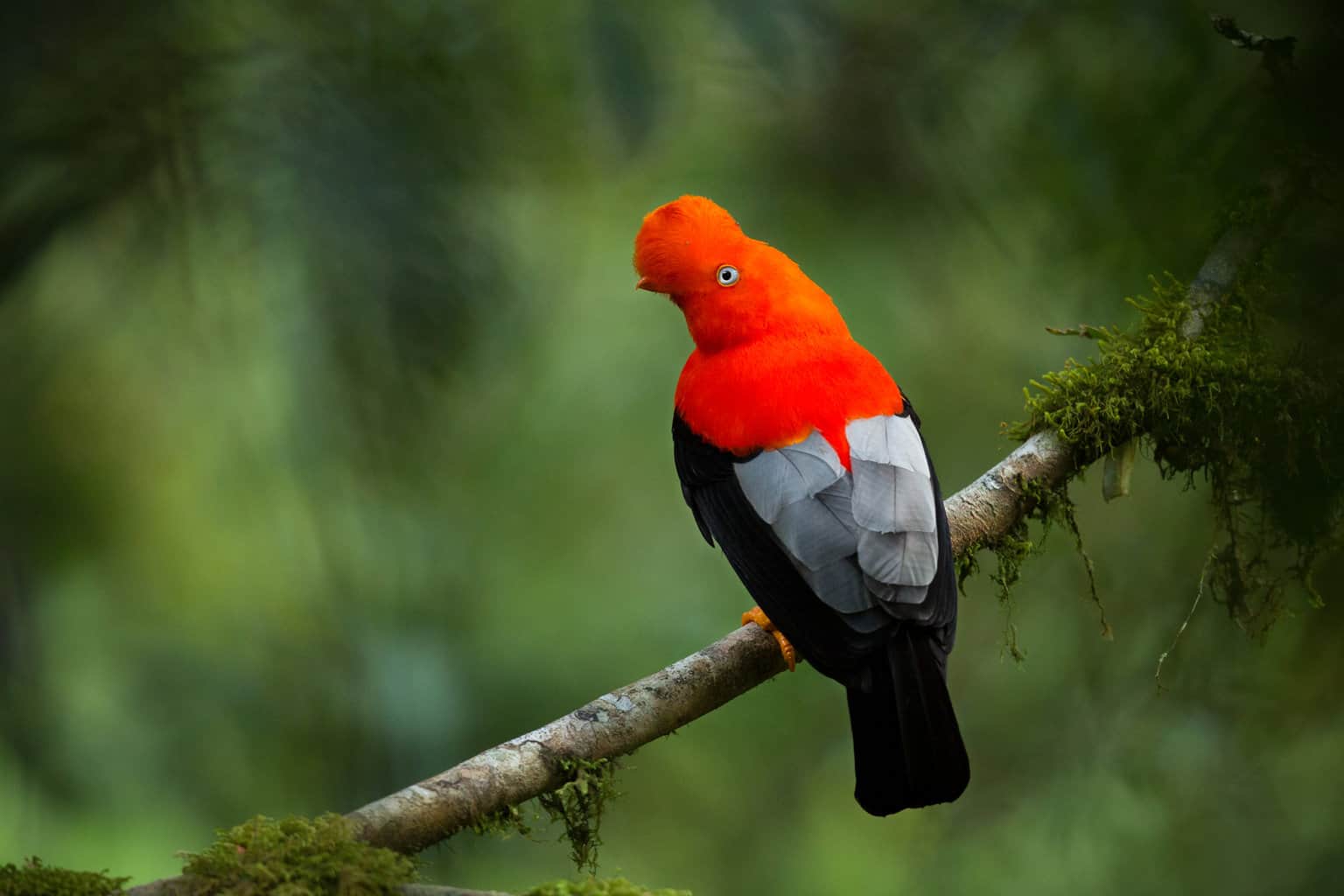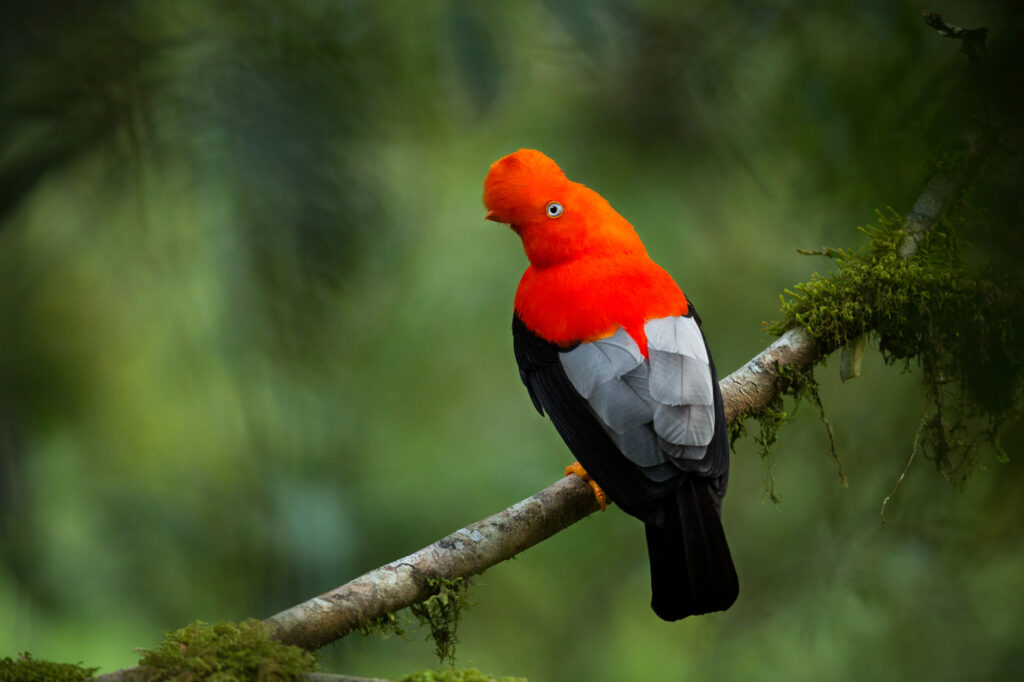The Andean cock-of-the-rock is a bird with a memorable appearance, but you’ll have to get especially lucky to catch a glimpse of this national bird of Peru, South America. This shy avian creature is more often heard than seen in its cloud forest home along the Andes mountain range. Even if we have to settle for photos, this unmistakable bird is a fascinating sight to behold.
Appearance
The Andean cock-of-the-rock is a sexually dimorphic species, which means that the appearance of the male and female are markedly different. The male of this species is especially eye-catching, with a large, disc-like crest that extends so far over its head that it almost totally obscures the beak.
Males are adorned with bright red-orange plumage and black and white wings. Females are less vibrant, with duller brown plumage and a smaller crest.
The Andean cock-of-the-rock is a large passerine or perching bird. It grows to around 13 inches long and about 265 grams in weight, though males can sometimes be larger and may weigh up to 300 grams.
Location and Habitat
The Andean cock-of-the-rock occupies a large range that spreads across Venezuela, Colombia, Ecuador, Peru, and Bolivia. It typically favors the lower and middle levels of the cloud forest of the Andes Mountains, but will sometimes venture higher in fruiting trees.
Call and Mating Ritual of the Andean Cock-Of-The-Rock
While engaged in breeding displays, the male Andean cock-of-the-rock makes loud grunting or squawking sounds, which increase in intensity as the female approaches.
This call is part of an elaborate mating ritual, which takes place in communal gathering places called leks. In a lek, males of the species gather to show off their bright plumage and engage in mock confrontation display activity with other males.
Once the female has chosen from the gathered males and has mated, she leaves to build her nest, lay her eggs, and incubate and care for the chicks. The male is polygamous and has no involvement in nesting and care of the eggs and chicks.
Diet
The Andean cock-of-the-rock subsides on a diet of mostly fruit and insects, supplemented occasionally by small frogs and lizards.
The seeds and pits of their fruity diet pass through the digestive systems of these birds, dispersing the seeds and contributing to the forest’s overall health and diversity.
Migration
The Andean cock-of-the-rock is nonmigratory.
Life Span and Conservation

These birds have natural predators including larger birds of prey, jaguars, pumas, and boa constrictors. Some researchers have found banded males to return to lekking sites for as many as 14 years, suggesting a lifespan of at least this length for males.
While they are currently widespread within their range and are identified by the International Union For Conservation as a species of Least Concern, this species is vulnerable to deforestation and is targeted by the caged bird trade in some areas.
Frequently Asked Questions
Where Does the Name “Andean Cock-Of-The-Rock” Come From?
The “Andean” portion of this bird’s name is easy to explain, as it is drawn from the species’ range throughout the cloud forests of the Andean mountains. It earns the “rock” portion of its name from its tendency to perch and nest on cliffs and rocky outcrops.
Can the Andean Cock-Of-The-Rock Fly?
This bird can and does fly, perching on tree branches and plucking fruit from trees.

